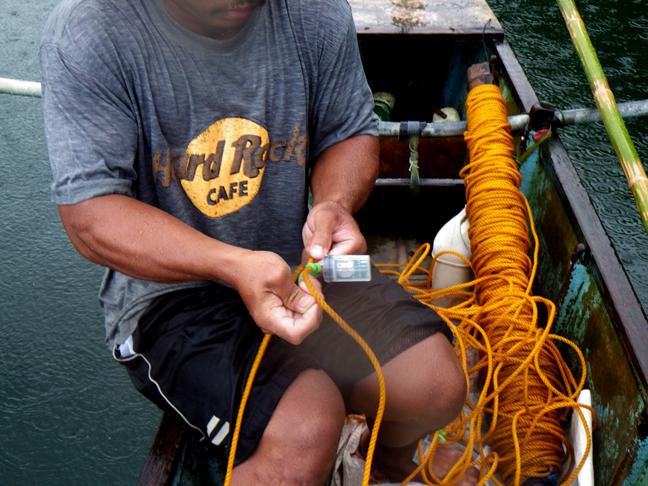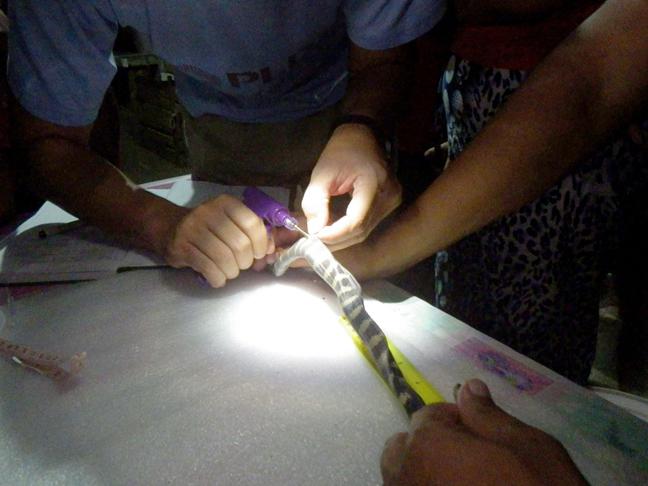Vhon Oliver S. Garcia
This project targets for the efficient management and protection of the Lake Taal endemic Hydrophis semperi through the use of science-based information to be generated in this study.
This is an in-depth scientific investigation of the biology and conservation status of the Lake Taal Sea snake Hydrophis semperi aiming to fill in the large gap of knowledge on the ecology, population, and behaviour of the species, which at present, is poorly studied and remains essentially unknown.

Deployment of Data Loggers.
This project deems pertinent with the species being endemic to Lake Taal and is recognized as a Threatened species (“Vulnerable”) by the International Union for the Conservation of Nature (IUCN) and if our knowledge remains with the status quo, we cannot protect a species if we know nothing about it. Thus, this study will generate scientific information through the use of both in situ observations and ex situ investigations to determine its activity patterns, habitat preferences, and foraging ecology.

Specimen Marking using PIT Tags.
Its population and micro-distribution will also be assessed through systematic sampling at different locations around and within the lake. Results of the study are anticipated to provide novel scientific insights regarding our knowledge on the ecology, life history, and evolutionary adaptation of this unique group of sea snakes that inhabit freshwater ecosystems. In the process, natural and man-mediated threats to the species will also be identified, which will be useful for determining measures to ensure its protection. As a species coexisting with aquaculture, the study will provide ecological information that could determine the effect of the species in the fisheries industry (e.g., impact as predator of cultured fish species).
With the generated scientific knowledge, a more effective management of the unique Hydrophis semperi and its habitat may be implemented. This study will provide needed scientific backing for current conservation measures being implemented, by local government units (e.g., provincial or regional level of governance) in Lake Taal. Additionally, it will provide specific science-based recommendations and integrate scientific information to existing management plans and education programs.